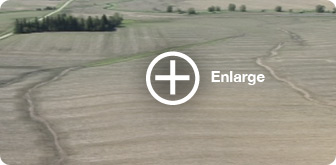MAKING IT RIGHT – Page 3
The first step is to get back to full enforcement of the conservation compliance law that has been on the books since 1985. The Natural Resources Conservation Service must intensify its annual inspections to determine whether farmers are maintaining the required soil conservation practices, and the Farm Service Agency (FSA) must make full use of its authority to impose graduated penalties on farmers and landlords who fail to comply with conservation requirements.
Figure 14: Lax Enforcement Worsens Erosion
But more needs to be done. It has been 20 years since farmers were first asked to write and implement conservation plans. It is only reasonable that they now be asked to meet today’s challenges in return for a continuing flow of income, production and insurance subsidies. Therefore, the Environmental Working Group calls on Congress to:
- Reopen and revise all legacy conservation compliance soil conservation plans (those approved and implemented before July 3, 1996). Practices prescribed in the revised plans must reduce soil erosion to the land’s T value and prevent ephemeral gully erosion on highly erodible cropland.
- Require treatment and/or prevention of ephemeral gully erosion on all agricultural land — not just highly erodible land — owned by producers or landlords receiving income, production, insurance and conservation subsidies.
- Require a vegetative buffer at least 35 feet wide between row crops and all lakes, rivers and smaller streams.
- Require producers participating in existing and new crop and revenue insurance programs to meet conservation compliance provisions.
- Ensure that producers who convert native prairie or rangeland to row crops do not receive income, production, insurance or conservation subsidies on those acres.
- Use a portion of the funding provided for income, production, insurance and conservation programs to pay for the technical staff needed to plan and implement the required conservation practices and to complete annual inspections to certify that those practices are in place.
To be eligible for government farm payments, the 1985 farm bill required all producers with highly erodible land to have a conservation plan. It further required farmers to remain in compliance with those plans. Farmers found to be out of compliance could not receive U.S. Department of Agriculture program payments.
At that time, I served as a county commissioner and as a state soil conservation commissioner. Farmers in the early years of the law really did follow their farm plans and were in compliance. In 1996 a new farm bill was enacted called Freedom to Farm. Compliance has been downhill ever since then. Farmers have not followed their conservation plans, and each year we see many producers out of compliance. Fall cultivation has been on the increase. In my area of southwestern Iowa, we have steep slopes and highly erodible soils. Big machinery is used to plant in soils with little or no surface residue and multiple end rows; plus, many farmers have eliminated contour practices. This is a formula for severe soil erosion. Heavy rain prior to closure of the corn and soybean crop canopy is when we see unbelievable soil loss. My guess is that more than 50 percent of the farmers in our area are out of compliance, and very few of them are ever penalized.
Soil erosion can be held to a minimum with the use of terraces, no-till planting, the elimination of end rows, and use of filter strips and field borders. Heavy erosion not only moves soil, but also reduces soil fertility and organic matter. And with soil erosion comes increased pollution of our streams and lakes.
I think soil erosion in the Corn Belt is the worst I have ever observed. Our present cropping methods used to grow corn and soybeans are not sustainable or environmentally friendly.
Aldo Leopold provided a blue print for the conservation of our land. In his essays in A Sand County Almanac, he eloquently commented on land as a community, not as a commodity. I fear today we do treat land as a commodity, when we should view it as a community of people living in harmony with nature.
Dave Williams,
Villisca, Iowa Farmer — active in the work of the Iowa Environmental
Council and the Leopold Center for Sustainable Agriculture.

 Twitter Updates
Twitter Updates





